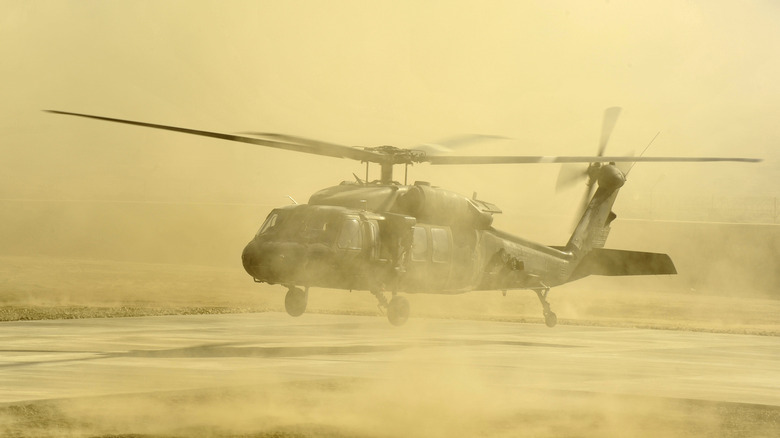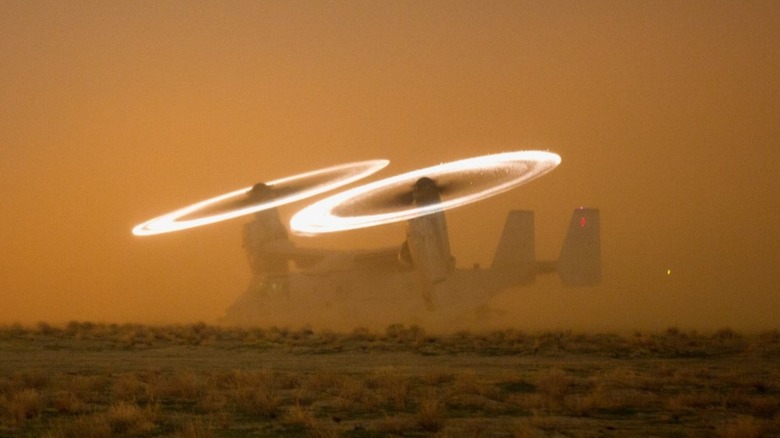Here's What Happens When Helicopters Fly In Sandstorms
Sometimes, when the conditions are just right, a helicopter can kick up a swirling, sparkling halo. It looks like a miniature spiral galaxy attached to the rotor blades. This is caused by a phenomenon known as the Kopp-Etchells Effect. The term was coined by war photographer Michael Yon, who, while embedded with troops in Afghanistan back in 2009, noticed nobody had a name for it. After about two weeks of musing, he decided to honor two soldiers killed in action that year in Sangin – 21-year-old US Army Ranger Benjamin Kopp and 22-year-old British soldier Joseph Etchells.
The science behind the effect was a mystery for many years, with pilots and even top brass getting it wrong. The most popular theory was electricity. One pilot told Yon he believed it was "a result of static electricity created by friction," according to Nautilus. But that doesn't hold up. A static discharge would look more like a lightning storm, not a halo of sparks seen in photos. Scientific American reported that tests at NASA killed the electricity-based theories. When engineers used metals that conduct electricity but don't spontaneously ignite, the sparkling effect never occurred.
The real answer is way cooler and a bit more violent. It has something to do with the protective abrasion strips made from metals like titanium or nickel that helicopter rotors are fitted with. When a chopper flies through a cloud of sand, the particles blast tiny bits of metal off the blades. These metals can be pyrophoric, meaning they spontaneously ignite when they're dispersed into the air as a fine powder. It's this "pyrophoric oxidation" that creates the brilliant sparks.
It may be beautiful, but sand can be a helicopter's worst enemy
Flying a helicopter through a sandstorm is basically a nightmare scenario for the aircraft. The sand-filled air relentlessly abrades the edges of the helicopter blades, typically made of composite materials. It also gets sucked inside, quickly causing engine wear and a drop in power. Sure, some systems can help filter the air, but as it stands, the most acute danger isn't the wear and tear, it's the terrifying phenomenon known as "brownout."
This phenomenon isn't just a matter of poor visibility. When a chopper gets low, its own rotors kick up what one former Army pilot described to Breaking Defense as a "big huge swirling mass of these particles" coming from every direction. This completely disorients a pilot's eyes and inner ear, scrambling their spatial awareness.
It is a massive problem. According to one expert who spoke to the publication, "Brownouts has been a significant contributor to the losses of some 600 Americans and 400 vertical flight aircraft in the past 10 years of conflict." In fact, these visual impairments have proven to be a greater threat than combat, causing more aircraft and personnel losses than hostile attacks since 2001. It's a reminder of how vulnerable even the best military helicopters can be, where a single bad maneuver can trigger fatal events like mast bumping.

